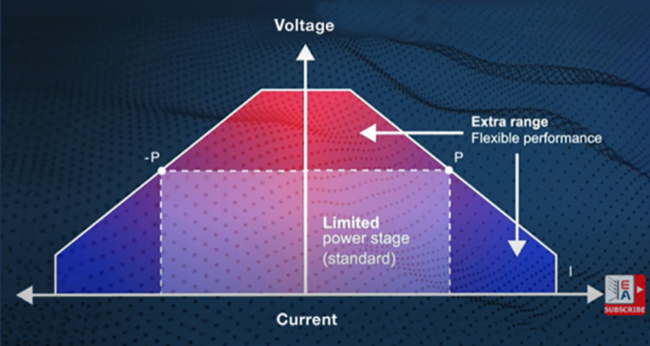The latest high-performance programmable power sources and loads are enabling greener solutions.
Semiconductor wafer fabrication and electrochemical electrolysis processes have always been big electrical energy consumers. Ironically, testing “green” energy components like electric vehicle battery arrays and solar panel inverters also consumes lots of energy. Fortunately, advanced programmable power sources and electronic loads are now available for industrial-scale applications. These systems dramatically reduce the total energy expended while providing highly stable and reliable power.
High power density
Industrial rack-mount, bi-directional programable power supplies are utilized in numerous manufacturing processes. Typically offering a wide input voltage range, these systems can be programmed to deliver currents to simulate sources like solar energy arrays and battery charging systems, and to perform fuel cell systems testing, battery pack testing and battery recycling. They can also be used to power furnaces for semiconductor wafer fabrication and electrochemical electrolysis processes.
Advances in high electron mobility transistor (HEMT) technology have enabled dramatic improvements in the power efficiency and power density of these systems. For example, the EA-PUB 10000 6U utilizes GaN technology to deliver 60KW of power output in a single 6U package.
Bidirectional regenerative systems
Bi-directional programable power systems provide both source and load capabilities and return up to 96% of the power consumed back to the local power grid. In a sense, they “borrow” the power to perform the tests and then return most of the power to the utility.
In many applications, a programmable power system delivers the prescribed voltage/current profile to the system under test and the power utilized is then burned off utilizing load banks.
Regenerative electronic loads (ELRs) dramatically reduce the wasted energy and other problems that load banks create by redirecting the load power back to the utility using an inverter stage, synchronized to the power line input.
This ELR approach also has a significant effect on a unit’s size, cooling requirements, and audible noise. In applications where the power is “borrowed” to conduct testing, a 300KW rack system uses only around 20KW of total power for the entire process. In addition to dramatic reductions in direct energy costs, the use of regenerative load technology can also reduce supporting energy costs for things like air conditioning.
True auto-ranging
The maximum power specification for many programmable power supplies applies only at the maximum output voltage. If lower voltages are required, the output current is unable to increase, thus lowering the deliverable power. Similarly, such systems are unable to increase voltage above their specified maximum value.
This problem is solved with auto-ranging, a feature of advanced programmable power sources that enables the maximum power to be delivered over a wide range of output voltage and/or current conditions. True auto-ranging expands the range of voltage/current options over an exceptionally wide scale.
Source and load characterization
In addition to providing a sustainable, green solution, programmable power systems must be capable of simulating the characteristics of various devices such as solar cells, batteries, charging systems, and fuel cells, to name a few. While many of these functions can be programmed and uploaded to the system, some offer optional built-in function generators to create complex signals.
For example, the advanced industrial systems described here provide special functions, such as maximum power point tracking (MPPT) and EN 50530 solar panel inverter testing. By means of optional EA Power Control software, users can simplify the task of simulating various devices and creating sequences of outputs (or inputs) to comply with key test standards, such as the LV123, LV124-, and LV148-standard-based test sequences for the testing of automotive components and systems, thus eliminating the need for external waveform generation instrumentation.
Conclusion
It seems counter-productive to waste substantial amounts of energy to fabricate and test products that are designed to save energy. To address this problem, advanced power conversion HEMT technologies are now enabling higher-efficiency, higher-power-density power supplies. In addition, innovative techniques—including regenerative programmable electronic loads and true auto-ranging supplies and loads—are moving the technology in the direction of sustainability.
By Jarod Todd, Applications Engineer, EA Elektro-Automatik, Inc.

